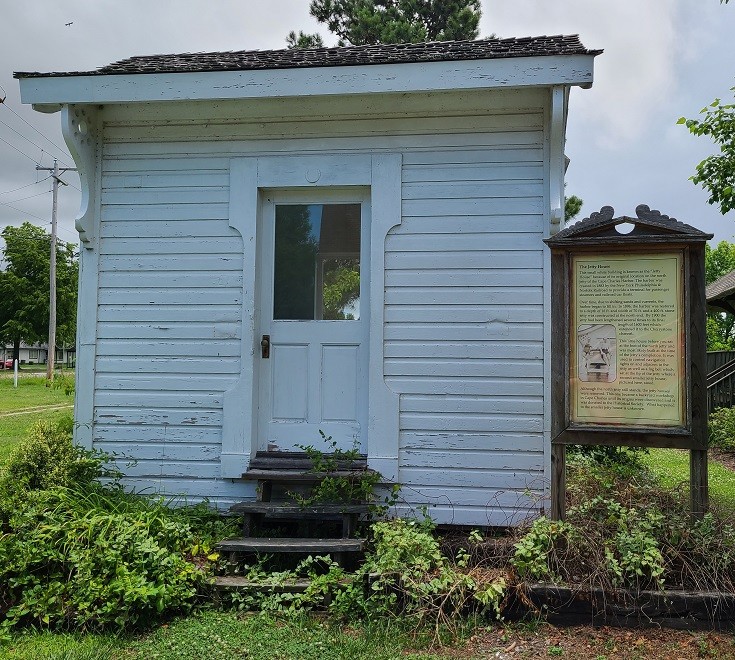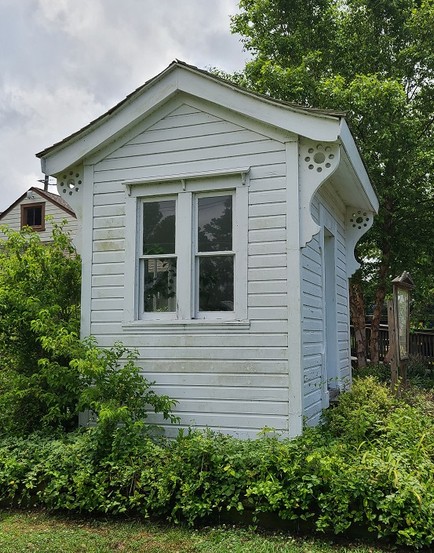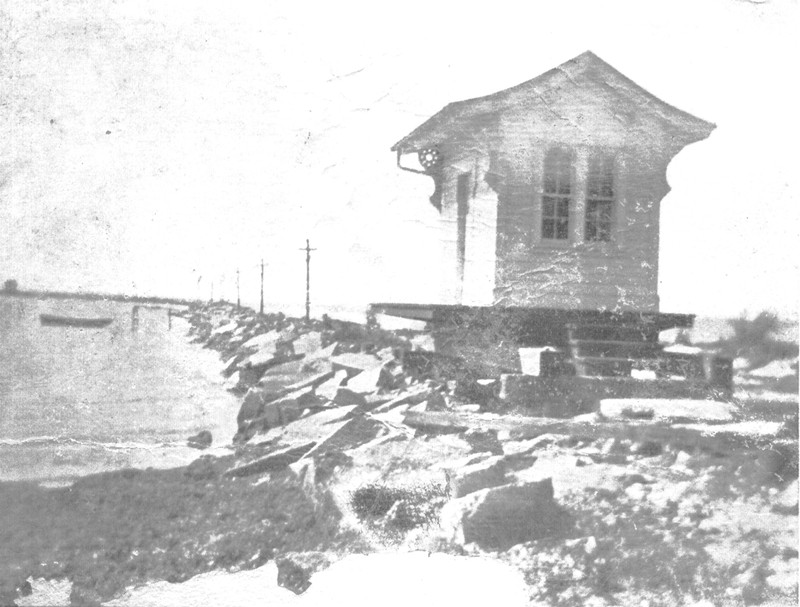Jetty House
Introduction
Author-Uploaded Audio
Listen to a narration of this entry's description by Melinda McPeek.
Text-to-speech Audio
Images
Jetty House

Jetty House

Jetty House c. 1900

Smaller South Jetty House c. 1920s
%20standing%20next%20to%20fog%20bell%20at%20end%20of%20jetty%20CC%20harbor%20ca%201928.jpg)
Backstory and Context
Author-Uploaded Audio
Listen to a narration of this entry's description by Melinda McPeek.
Text-to-speech Audio
Dredging began on a small creek in 1883 to form the Cape Charles Harbor. The harbor was completed in 1885 by the New York Philadelphia & Norfolk Railroad to provide a terminal for passenger steamers and railroad car floats. Over time, due to shifting sands and currents, the harbor began to fill in. In 1896, the harbor was restored to a depth of 16 ft. and width of 70 ft. and a 400 ft. stone jetty was constructed at the north end. By 1900 the jetty had been lengthened several times to its final length of 1600 feet which extended it to the Cherrystone channel.
This little house sat at the beginning of the north jetty and was most likely built at the time of completion of the jetty. It was used to control navigation lights on and adjacent to the jetty, as well as a fog bell which sat at the other end of the jetty where a second smaller jetty house stood.
While the north jetty still stands, the jetty houses were removed at some point and this one became a backyard play house in Cape Charles until its origins were discovered and is was donated to the Historical Society. What happened to the smaller jetty house is unknown.
Sources
United States Army Corp of Engineers. Annual reports of the War Department for the fiscal year ended June 30, 1897: Report of the Chief of Engineers, Part 2. Government Printing Office, Washington, DC, 1897.
United States Army Corp of Engineers. Annual reports of the War Department for the fiscal year ended June 30, 1905: Report of the Chief of Engineers, Volume V. Government Printing Office, Washington, DC, 1905.
United States Army Corp of Engineers. Annual reports of the War Department for the fiscal year ended June 30, 1903: Report of the Chief of Engineers, Volume IX, Part 1. Government Printing Office, Washington, DC, 1903.
,
Cape Charles Historical Society and Museum
Cape Charles Historical Society and Museum
Bill Neville
Bill Neville
